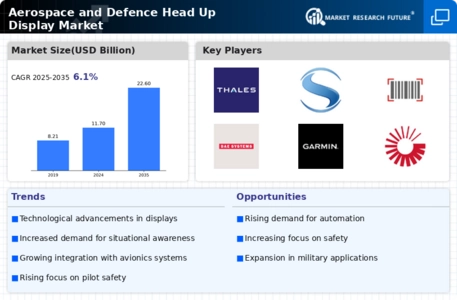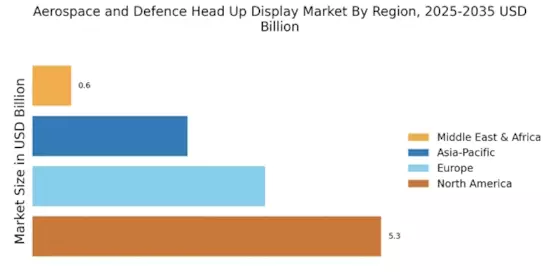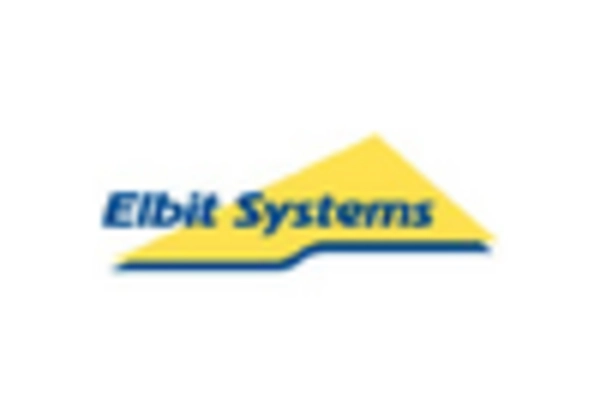Rising Military Expenditure
The Aerospace and Defence Head Up Display Market is significantly influenced by rising military expenditure across various nations. Governments are increasingly allocating budgets towards modernizing their military capabilities, which includes upgrading avionics and display systems. This trend is particularly evident in regions with ongoing geopolitical tensions, where nations are investing heavily in advanced technologies to maintain a strategic edge. Recent reports suggest that military spending is expected to grow by 3-4% annually, leading to increased procurement of head-up display systems. This rise in expenditure indicates a robust market potential for manufacturers and suppliers in the aerospace and defence sectors.
Focus on Pilot Safety and Training
Pilot safety and training are paramount concerns within the Aerospace and Defence Head Up Display Market. As aviation technology evolves, there is a growing emphasis on equipping pilots with advanced tools that enhance safety and operational efficiency. Head-up displays play a crucial role in this regard, providing essential flight data without obstructing the pilot's view of the external environment. Training programs are increasingly incorporating these systems to familiarize pilots with their functionalities, thereby improving overall safety standards. Market analysis suggests that the integration of head-up displays in training simulators is likely to increase, reflecting a commitment to enhancing pilot preparedness and safety in various operational scenarios.
Emergence of Civil Aviation Applications
The Aerospace and Defence Head Up Display Market is witnessing the emergence of civil aviation applications, expanding its traditional military focus. Airlines and commercial operators are increasingly adopting head-up displays to enhance flight safety and operational efficiency. These systems provide pilots with critical flight information, reducing workload and improving decision-making during critical phases of flight. Market trends indicate that the adoption of head-up displays in civil aviation is projected to grow by approximately 10% over the next few years, driven by the need for improved safety measures and regulatory compliance. This shift suggests a promising avenue for growth within the aerospace and defence sectors, as manufacturers adapt their offerings to meet the needs of commercial aviation.
Technological Advancements in Display Systems
The Aerospace and Defence Head Up Display Market is experiencing a surge in technological advancements, particularly in display systems. Innovations such as OLED and microLED technologies are enhancing the clarity and brightness of displays, which is crucial for pilots and operators in high-stakes environments. These advancements not only improve visibility but also reduce power consumption, making systems more efficient. As a result, the demand for next-generation head-up displays is likely to increase, with projections indicating a compound annual growth rate of over 5% in the coming years. This trend suggests that manufacturers are focusing on integrating cutting-edge technologies to meet the evolving needs of the aerospace and defence sectors.
Growing Demand for Enhanced Situational Awareness
Enhanced situational awareness is becoming increasingly vital in the Aerospace and Defence Head Up Display Market. As military operations become more complex, the need for real-time data visualization is paramount. Head-up displays provide critical information directly in the pilot's line of sight, reducing the need to divert attention to cockpit instruments. This capability is particularly important in combat scenarios where split-second decisions can be life-saving. Market data indicates that the demand for head-up displays that offer augmented reality features is on the rise, with a projected market share increase of approximately 15% over the next five years. This trend underscores the importance of situational awareness in modern aviation and defence operations.


















Leave a Comment